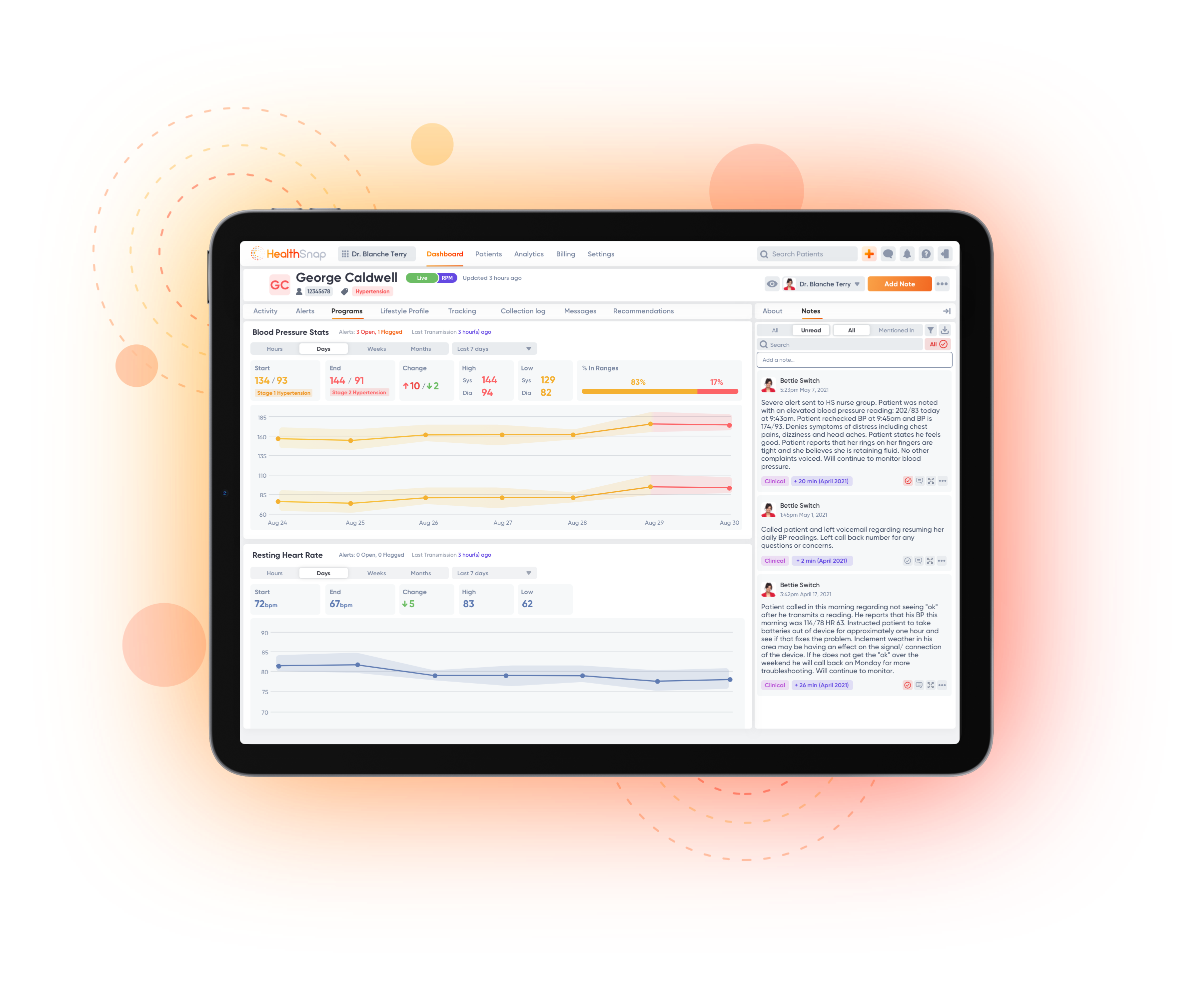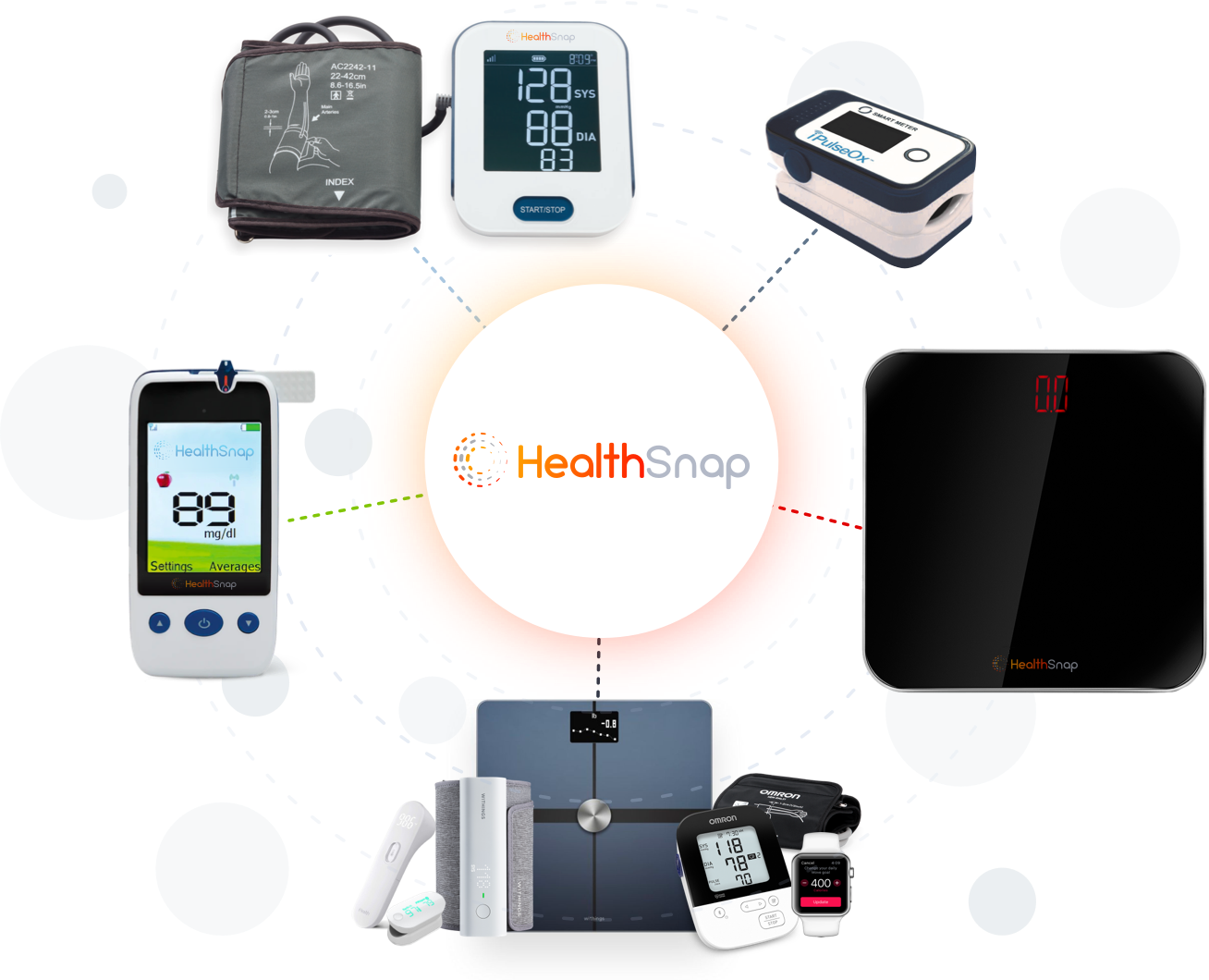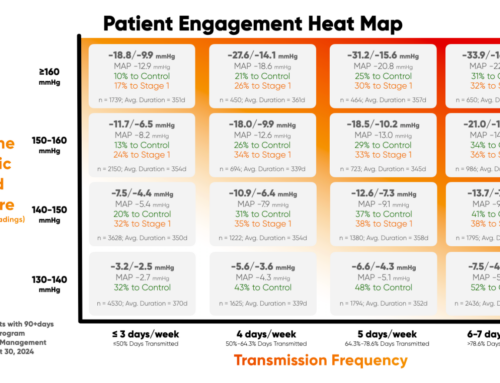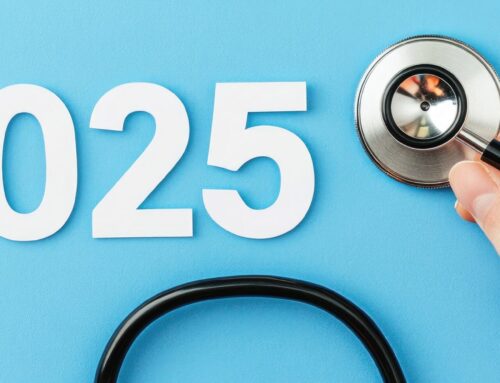Virtual Care Management (VCM), including Remote Patient Monitoring (RPM) and Chronic Care Management (CCM) has emerged as a transformative approach to healthcare, offering innovative strategies for managing chronic conditions with unprecedented efficiency and patient-centricity. Among the diverse applications of Virtual Care Management, four key use cases stand out in 2024, showcasing the technology’s ability to revolutionize chronic condition management.
These use cases encompass near real-time monitoring, personalized interventions, data-driven insights, and proactive care, collectively presenting a paradigm shift in how healthcare providers approach conditions such as hypertension, obesity, heart failure, chronic obstructive pulmonary disease, and type 2 diabetes.
In this guide, let’s take deep dive into four of the top use cases, exploring how VCM is reshaping chronic disease management and helping improve patient outcomes.
Virtual Care Management Use Case: Hypertension
One of the most prevalent and potentially dangerous chronic conditions today is hypertension, often referred to as the silent killer due to its asymptomatic nature. With advancements in technology and the advent of sophisticated VCM platforms, healthcare providers now have a robust solution to bolster the management of hypertension.
Near Real-time Blood Pressure Monitoring
Gone are the days of sporadic clinic visits for blood pressure readings. Virtual Care Management brings hypertension management into the homes of patients, enabling near real-time monitoring of blood pressure. This approach, based on Remote Patient Monitoring (RPM) preconfigured cellular blood pressure monitors, empowers patients to actively participate in their health management and provides healthcare providers with continuous, accurate data.
Proactive Care Plans and Personalized Outreach
One of the key features of Virtual Care Management for hypertension management is the ability to proactively adjust care plans based on dynamic risk triaging and alert routing. The system identifies high-risk patients and ensures timely outreach, offering a personalized patient experience. This tailored approach not only enhances patient engagement but also contributes significantly to improvements in health outcomes.
Customized Alerts and Medication Adjustments
Virtual chronic condition management platforms enable healthcare providers to customize population and patient-specific blood pressure alerts. This level of customization ensures that alerts are meaningful and actionable, guiding healthcare professionals to intervene precisely when needed. Moreover, the near real-time readings enable providers to proactively adjust blood pressure medications, optimizing treatment plans for individual patients.

Smart Longitudinal Graphs for Informed Decision-Making
The integration of smart longitudinal graphs in Virtual Care Management platforms provides healthcare providers with a comprehensive view of a patient’s blood pressure trends over time. This insightful data allows for informed decision-making, offering a deeper understanding of highs, lows, and average blood pressure readings. Providers can identify patterns, assess the effectiveness of interventions, and tailor care plans for long-term success.
Enhancing Quality Metrics with Proactive Patient Care
By delivering proactive patient care in the home with the help of patient-generated health data, VCM not only improves health outcomes but also enhances overall quality metrics. Healthcare providers can demonstrate a commitment to preventive care, reducing hospitalizations and emergency room visits related to hypertension complications.
Virtual Care Management Use Case: Obesity
A compelling application of Virtual Care Management is now available in the field of obesity management, where the need for continuous support, personalized strategies, and near real-time monitoring is helpful. VCM has emerged as a proven solution to set patients on the path to long-term weight loss success.
Near Real-time Weight Monitoring
Virtual Care Management in obesity management for health systems introduces a paradigm shift by enabling near real-time monitoring of weight readings. This near real-time data allows healthcare providers to track patients’ progress toward weight goals, offering a dynamic and responsive approach to weight management.
Customized Weight Alerts and Dynamic Outreach
Virtual Care Management platforms empower healthcare organizations to customize population and patient-specific weight alerts. This customization ensures that alerts are tailored to the individual needs and health status of each patient. Furthermore, dynamic risk triaging and alert routing enables personalized outreach, ensuring that interventions are timely and aligned with the specific requirements of each case.
Smart Longitudinal Graphs for Informed Decision-Making
The integration of smart longitudinal graphs in Virtual Care Management platforms offers healthcare providers a comprehensive view of a patient’s body weight trends over time. This data-driven approach allows for informed decision-making, providing insights into highs, lows, and average weight readings. Providers can identify patterns, assess the effectiveness of interventions, and refine strategies for ongoing success.

Virtual Care Management Use Case: Congestive Heart Failure
In recent years, Virtual Care Management programs have proven to be highly beneficial, particularly in the context of managing Congestive Heart Failure (CHF). This innovative use case is redefining care for CHF by focusing on near real-time monitoring, personalized interventions, and data-driven insights to improve patient outcomes and reduce costly hospital readmissions.
Near Real-time Monitoring
Remote Patient Monitoring brings near real-time monitoring to the forefront of CHF management. By continuously tracking essential indicators such as blood pressure and weight, healthcare providers can ensure that recently discharged congestive heart failure patients stay on the path to recovery. This proactive approach aims to prevent complications, enhance patient well-being, and avoid costly readmission penalties.
Customizable Alerts for Timely Interventions
One of the key features of virtual care management in CHF is the ability to set customizable alerts for weight, blood pressure, and pulse rate parameters. This customization ensures that alerts are tailored to the specific needs and conditions of each patient. When heart rate anomalies are detected, timely interventions can be initiated, preventing potential exacerbations, and promoting patient stability.
Longitudinal Insights for Informed Decision-Making
The integration of longitudinal weight and blood pressure insights is a hallmark of Virtual Care Management for CHF. These insights provide a comprehensive view of a patient’s health trajectory over time, allowing healthcare providers to identify patterns, assess the effectiveness of interventions, and make informed decisions about ongoing care strategies. Longitudinal data also contributes to personalized care plans, optimizing outcomes for each individual.
Virtual Care Management Use Case: Type 2 Diabetes
Virtual Care Management is playing a pivotal role within the health system in the context of Type 2 Diabetes Management. This use case harnesses the power of near real-time glucose monitoring to empower both patients and healthcare providers, fostering a proactive approach to diabetes care and preventing diabetic events.
Near Real-Time Glucose Monitoring for Optimal Control
At the core of Type 2 Diabetes Management through Virtual Care Management is the ability to monitor near real-time glucose readings with specialized monitors called RPM glucometers. This feature allows patients to track their glucose levels at home, promoting active engagement in their care. Simultaneously, healthcare providers gain access to up-to-the-minute data, enabling them to intervene promptly in the event of fluctuations and provide timely guidance to keep glucose levels within the target range.
Pre and Post-Prandial Insights for Informed Decision-Making
Virtual Care Management goes beyond near real-time monitoring by offering pre and post-prandial insights. This means healthcare providers can analyze glucose levels before and after meals, gaining a comprehensive understanding of how dietary choices impact blood sugar. Armed with these insights, personalized interventions can be implemented, including tailored nutritional guidance to optimize glycemic control.

Customizable Alerts for Personalized Care
One of the key strengths of virtual care management for Type 2 Diabetes Management is the customization of alerts. Both population and patient-specific glucose alerts can be configured to align with individual needs and conditions. This ensures that healthcare providers receive notifications when patients require attention, allowing for proactive management of high-risk situations and preventing potential diabetic events.
Longitudinal Glucose Insights for Proactive Care
The integration of longitudinal glucose insights is vital to the Virtual Care Management for diabetes. These insights offer a historical view of a patient’s glucose metrics over time, facilitating trend analysis and the identification of patterns. By understanding how various factors influence glucose levels, healthcare providers can implement proactive care plans, adjusting medications or interventions to optimize long-term diabetes management.
Choose HealthSnap’s Virtual Care Management Programs to Improve Patient Care
Are you ready to boost your virtual care management capabilities and take patient care to the next level? Look no further than HealthSnap, a leading provider of Remote Patient Monitoring (RPM) and Chronic Care Management. Our cutting-edge technology empowers healthcare providers to navigate the complexities of chronic conditions with ease, offering near-real-time monitoring, personalized interventions, and data-driven insights.
Key Strengths of HealthSnap:
-
Seamless Integration: HealthSnap seamlessly integrates with Electronic Health Records (EHRs), ensuring a smooth assimilation into existing clinical systems. This integration enhances accessibility to real-time patient data, allowing healthcare providers to make informed decisions promptly.
-
Patient-Centric Approach: Our virtual care management programs prioritize a patient-centric approach, tailoring care plans to individual needs. With personalized interventions and remote monitoring, patients experience a new level of engagement, satisfaction, and improved health outcomes.
-
Comprehensive Data Analytics: HealthSnap provides robust analytics tools for comprehensive health data analysis. Leveraging predictive analytics, healthcare providers can adopt a proactive care approach, anticipating patient needs and reducing the risk of adverse events.
-
Regulatory Compliance: Navigating the complex regulatory landscape is simplified with HealthSnap. Our commitment to regulatory compliance ensures that healthcare providers can confidently meet billing and coding requirements, leading to optimized reimbursement and elevated healthcare quality.
Redefine the future of chronic condition management with our state-of-the-art Virtual Care Management programs. To request a demo, call today at 888-780-1872 (Ext. 3) or click here to schedule a consultation.











